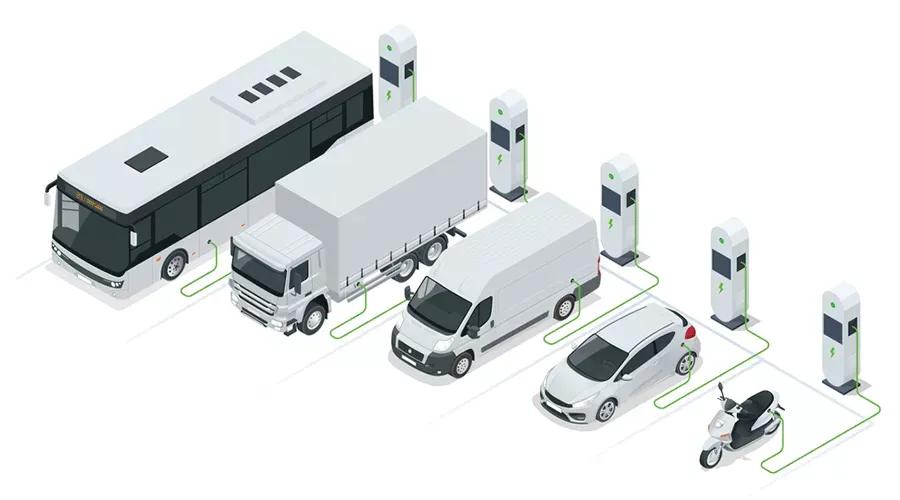In this case, charging processes are performed with reduced power and are staggered over time. A comparison of this approach to uncontrolled charging reveals that, while the costs are significantly lower, at the same time the availability of electric cars and thus their users’ mobility needs are not restricted by any means. This smart control process is performed by charging and energy management systems, which should be taken into account even when setting up the charging infrastructure.
When it comes to selecting a charging system, there are basically two options to choose from: decentralized cloud-based solutions or purely local systems. Both types of system are used in a large number of charging infrastructure projects and can show off their advantages depending on the use case. To find the charging solution that’s perfect for you, you should think about your current and future needs in terms of both equipment and functions before setting it up.
Read on to find out about the two options’ advantages and disadvantages and how to combine the best of both worlds.
Pure cloud-based systems
Thanks to standardized interfaces and the remote commissioning feature, a cloud-based system is easy to install. This advantage is also reflected in its use, since the system allows you to verify and control charging operations completely remotely. Centralized management is particularly useful for multi-site charging parks. This includes the likes of displaying and remotely accessing all charging points’ relevant data, enabling remote starting, remote stopping or remote restarting. If faults and failures occur with this type of system, alert messages ensure that problems can be identified and rectified as quickly as possible – even remotely in most cases. Maintenance is hassle-free, too. Charging management and charging stations can always be upgraded to the latest software version by means of updates.
Additionally, the remote solution can take external factors – such as individual driver requirements, grid operator signals, vehicle reservation systems or energy tariff information – into account. Cloud systems are also particularly future-proof and offer added flexibility for upcoming customer requirements and technical developments: from more energy-efficient charging and retrofitting additional charging points, to exploiting additional cost optimization potential.
However, if the charging management system controls the charging processes purely remotely, the response is delayed compared to local systems. A cloud solution is also dependent on a working internet connection, meaning 100% reliable and accurate charging management is impossible.
Local systems without a backend
The Association of German Engineers (VDI) recommends a local system that flexibly controls the charging solution’s power consumption depending on other grid consumers (according to VDI 2166). Local consumers such as the current building load can be taken into account in real time by means of a direct connection on site. This is particularly important at sites with little grid capacity, when a number of large consumers need to be supplied with energy at the same time. Additionally, local energy generators such as a photovoltaic installation or a combined heat and power plant can be integrated with ease.
Since both load measurement and charging power optimization take place on site, a local system is virtually fail-safe. Even if an internet connection is unstable, optimum load management is thus ensured and network overload is ruled out at all times.
On the flip side, the lack of a cloud component means that a purely local solution cannot communicate with the outside world, making remote monitoring and access impossible. So vehicles that are not charging or faults at charging stations are often only discovered directly at the charging station in question and can only be rectified there too. Two disadvantages deserve special mention with a view to future viability. First of all, many local systems are self-contained, so you are tied to one charging station manufacturer and cannot combine different types of charging station (AC and DC stations). Secondly, with certain local solutions – hub-satellite systems – the number of charging stations is limited depending on the provider.
Combined systems: the best of both worlds
One thing that is clear is the fact that both cloud-based and local systems have their advantages and disadvantages (which should be taken into account when deciding on a charging solution).
However, this trade-off can be avoided by opting for a combined system such as ChargePilot®, our charging and energy management solution. A locally installed controller regulates the charging solution’s power consumption, taking all the consumers into account. The rapid response time to any changes in the building load and independence from a stable internet connection guarantee reliable and fail-safe charging management. At the same time, the controller communicates with a cloud backend, enabling convenient monitoring and remote control of charging processes across sites, and interfaces to other systems can be put to optimum use.
So ChargePilot® gives you the best of both worlds.
